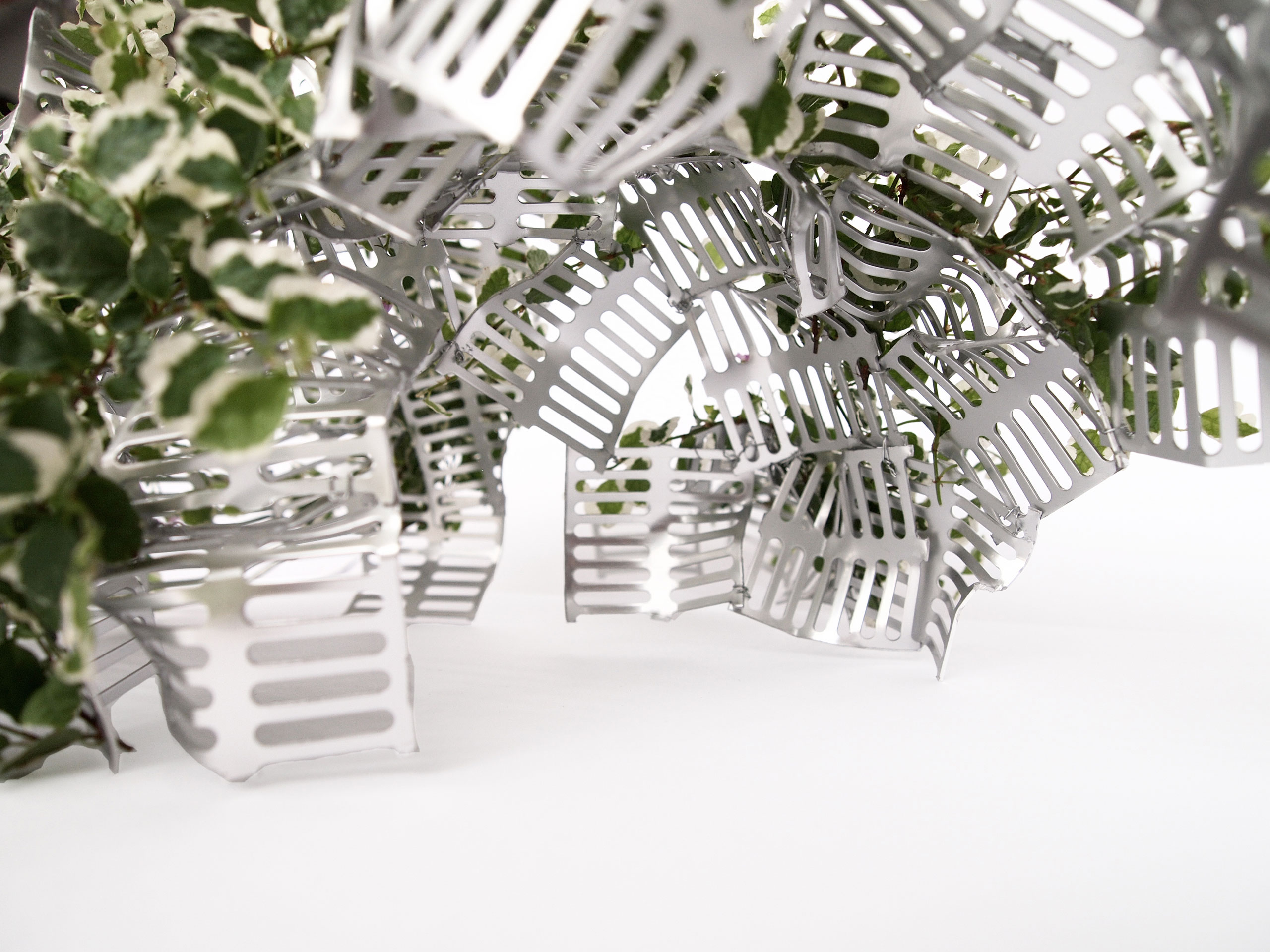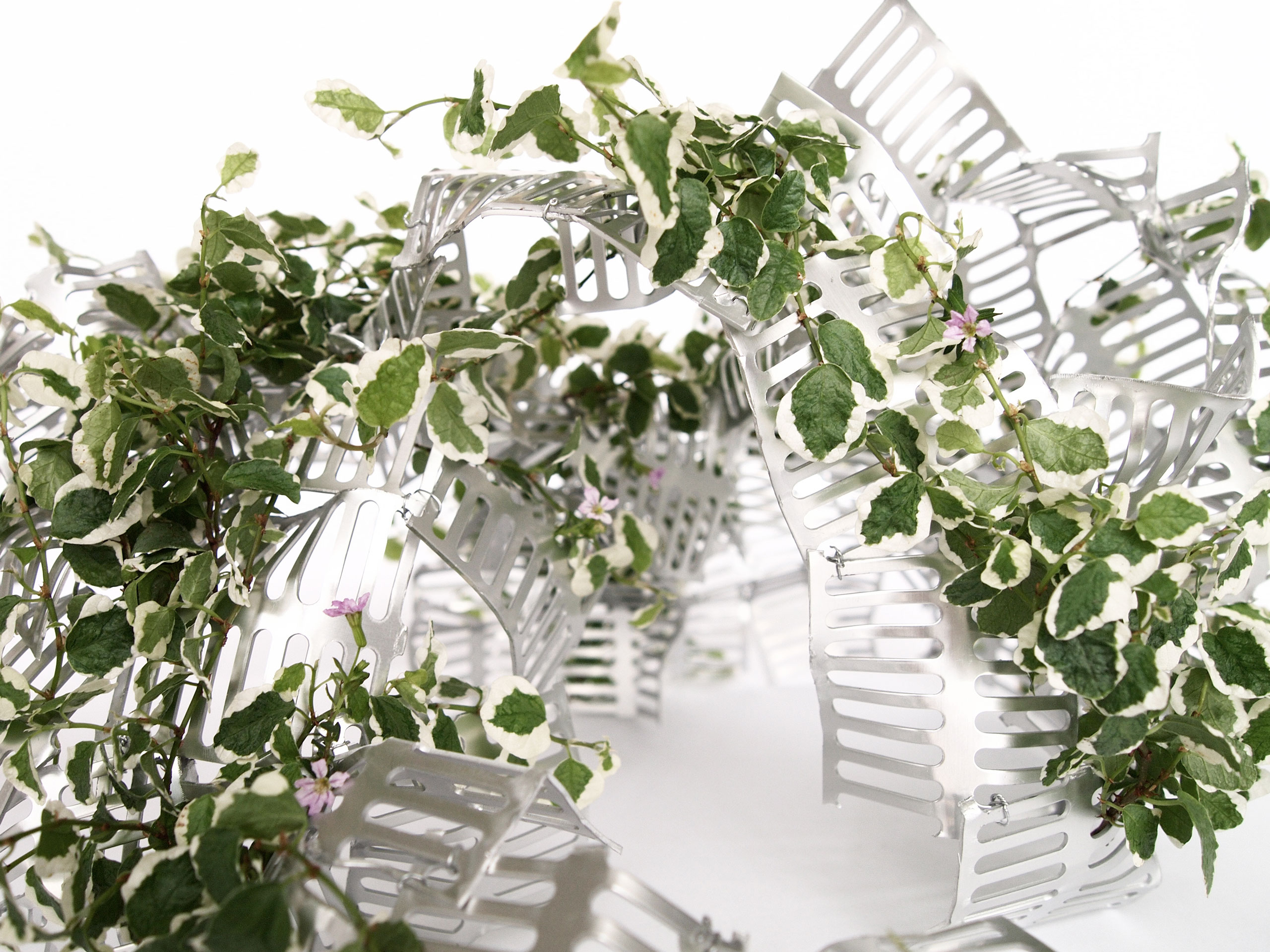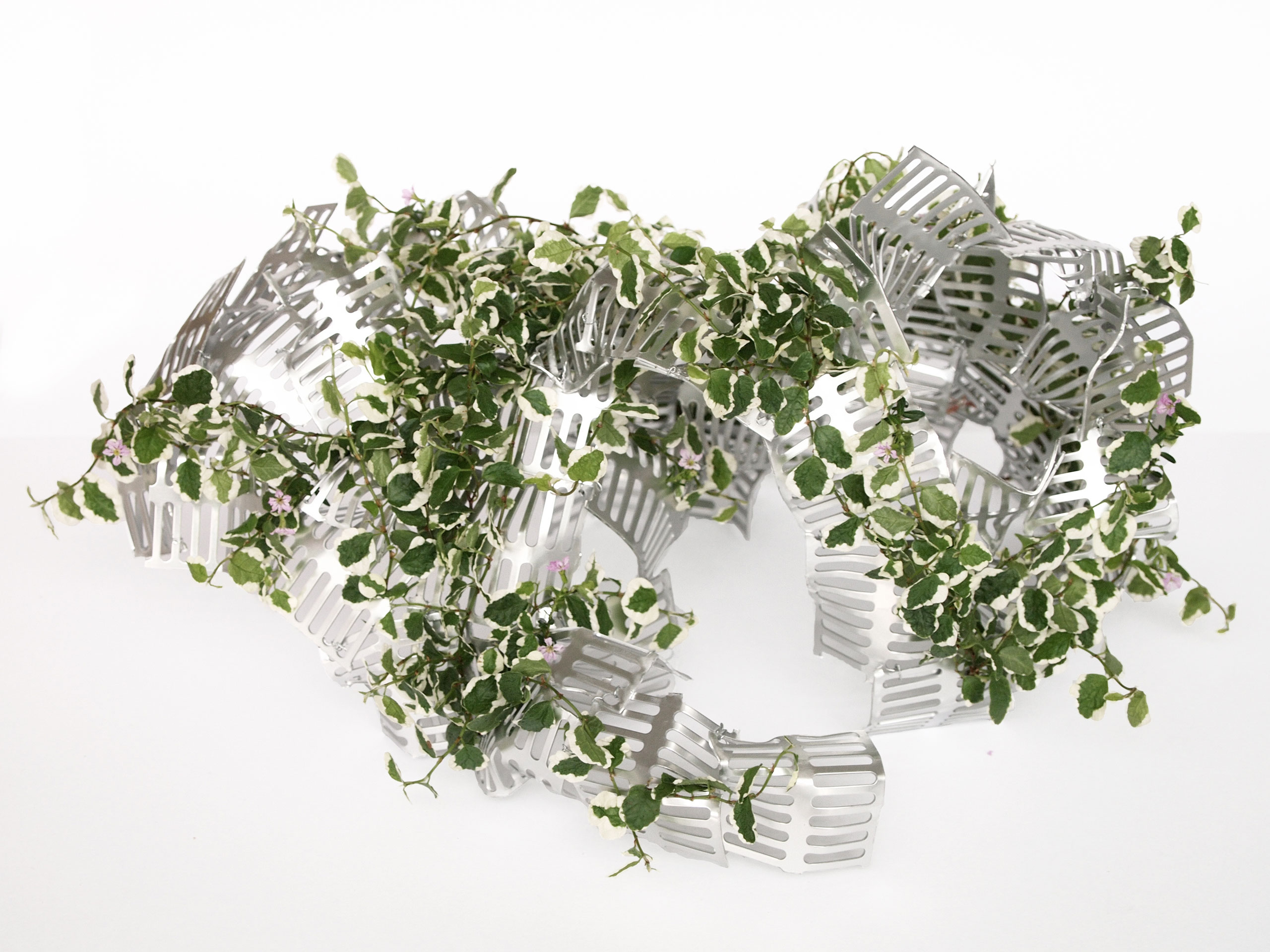Kaiju Kudzu
Sustainable: able to be used without being completely used up or destroyed [1]
Introduction
Today’s common understanding of ecology is an ideology mystified by the illusion that nature is a harmonious system perturbed by human hubris—as a result, society and ecologists reject trash, dismissing it as something to eliminate rather than something to incorporate [2].
This project challenges the notion of a sustainable architecture that can exist only within an ideal and predefined system, and places it within the ‘real’ ecological context.
Rather than re-inventing an entirely new system, or being constrained to using the louvers in their common application as walls, the proposal explores the sustainability of re-using the 900 x 900 mm louver module using it’s destruction as a strategy for construction and design.
Details (Sustainable, Small, Fast, Misunderstood)
Destroying: The crunching happens in general locations and orientation to generate 4 varying structurally self-supported modules. These elements are able to aggregate using the existing joint detail; and through rotation and multiplication, the architecture is able to change size and shape, and therefore accommodate a range of sites and functions.
Growing: Kudzu (kuzu) sustains itself by tapping into water, which it will get by extending its network of roots into the porous water retaining bricks. Growing at 30-60 cm a day, it tends towards sunlight in order to optimize its own nutrition; reciprocally shading whatever it encloses to a maximum.
The Monster: Trash and Kudzu alike have been labeled noxious—much like a friendly monster that is misunderstood because of its appearance and reputation. Esthetically deceptive, the combination of seemingly destroyed metal and harmful vine foreground issues of appearance, understanding,
Ending Notes:
The proposed prototype is not an architecture, but rather a system. It is designed around the adaptability ease and flexibility that small architecture necessitates. By using the existing modules and industrial processes as well as a low-maintenance plant native to Japan we consider this new ecological approach to be the redefining and acceptance of a real sustainability.
Credits:
Competition: GreenBiz 2015.
Concept and developement: Deborah Lopez, Hadin Charbel.
Image credits: Deborah Lopez, Hadin Charbel.





